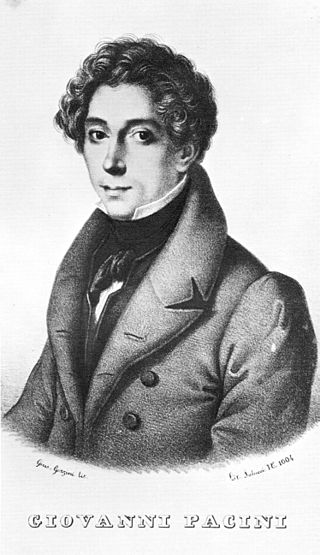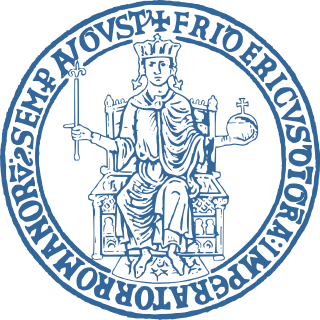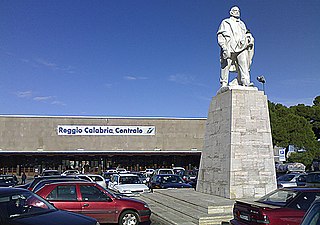Sources
- Sasso, Camillo Napoleone (1856). Storia de'monumenti di Napoli e degli architetti che gli edificavono: Dallo Stabilimento della Monarchia, sino al nostri Giorni, Volume 1. Largo Regina Coeli, Naples: Tipografia Federico Vitale. p. 224.
Sigismondo di Giovanni (died 1540) was an Italian architect in Naples, Italy, working in the Renaissance style.
It was him who designed the nobile Seggio di Nido (1507) and the cupola for the church of San Severino e Sossio. He was a pupil of Giovanni Francesco Mormando. In Seggio di Nido there are still Gothic influences remaining.

Giovanni Boccaccio was an Italian writer, poet, correspondent of Petrarch, and an important Renaissance humanist. Born in the town of Certaldo, he became so well known as a writer that he was sometimes simply known as "the Certaldese" and one of the most important figures in the European literary panorama of the fourteenth century. Some scholars define him as the greatest European prose writer of his time, a versatile writer who amalgamated different literary trends and genres, making them converge in original works, thanks to a creative activity exercised under the banner of experimentalism.

Giovanni Pacini was an Italian composer, best known for his operas. Pacini was born in Catania, Sicily, the son of the buffo Luigi Pacini, who was to appear in the premieres of many of Giovanni's operas. The family was of Tuscan origin, living in Catania when the composer was born.

The Kingdom of Naples, also known as the Kingdom of Sicily, was a state that ruled the part of the Italian Peninsula south of the Papal States between 1282 and 1816. It was established by the War of the Sicilian Vespers (1282–1302), when the island of Sicily revolted and was conquered by the Crown of Aragon, becoming a separate kingdom also called the Kingdom of Sicily. This left the Neapolitan mainland under the possession of Charles of Anjou. Later, two competing lines of the Angevin family competed for the Kingdom of Naples in the late 14th century, which resulted in the death of Joanna I by Charles III of Naples. Charles' daughter Joanna II adopted King Alfonso V of Aragon as heir, who would then unite Naples into his Aragonese dominions in 1442.

Gaetano Filangieri was an Italian jurist and philosopher.

Museo di Capodimonte is an art museum located in the Palace of Capodimonte, a grand Bourbon palazzo in Naples, Italy designed by Giovanni Antonio Medrano. The museum is the prime repository of Neapolitan painting and decorative art, with several important works from other Italian schools of painting, and some important ancient Roman sculptures. It is one of the largest museums in Italy. The museum was inaugurated in 1957.

The University of Naples Federico II is a public research university in Naples, Campania, Italy. Established in 1224 and named after its founder, Frederick II, it is the oldest public, secular, non-sectarian or state-funded university in the world, and one of the world's ten oldest universities in continuous operation.

Prince of Belmonte is a noble title created in 1619 by the Spanish crown for the Barons of Badolato and Belmonte. The name of the title is taken from the fortress town of Belmonte in Calabria, historically important for the defence of the Italian coast from Saracen invasion. Belmonte has been known since the Risorgimento as Belmonte Calabro.
This is a list of music conservatories in Naples, Italy.

Rinaldo Brancaccio was an Italian cardinal from the 14th and 15th century, during the Western Schism. Other members of his family were also created cardinals: Landolfo Brancaccio (1294); Niccolò Brancaccio, pseudocardinal of Antipope Clement VII (1378); Ludovico Bonito (1408); Tommaso Brancaccio (1411); Francesco Maria Brancaccio (1633) and Stefano Brancaccio (1681). He was called the Cardinal Brancaccio.

Line 2 is an 18.9-kilometre (11.7 mi) commuter rail line, part of the Naples Metro in Naples, Italy. As of January 2024, Line 2 connects 12 stations. It is operated by Trenitalia.
Scipione Lacorcia was a Neapolitan composer of madrigals.

Cristoforo Orimina was an Italian illuminator of the 14th century. He was a painter at the court of Robert of Naples and of Joan I of Naples.

Reggio di Calabria Centrale railway station is the main railway station of the Italian city of Reggio Calabria in Calabria. It is the most important station of its region and is owned by the Ferrovie dello Stato, the national rail company of Italy.
Villa San Giovanni railway station is the main railway station serving the town and comune of Villa San Giovanni, in the region of Calabria, southern Italy. It opened in 1884, and it forms part of the Battipaglia–Reggio di Calabria railway.

The Naples tramway network is located within the city and comune of Naples, in the region of Campania, southern Italy. In operation since 1875, the network has waxed and waned in size and vitality over the years, and is now growing once again. It is now 11.8 km (7.3 mi) long, and comprises three routes, known as lines 1, 2 and 4.

Giovanni Francesco Mormando was an Italian architect active in Naples, Italy.

The Accademia di Belle Arti di Napoli is a university-level art school in Naples. In the past it has been known as the Reale Istituto di Belle Arti and the Reale Accademia di Belle Arti. Founded by King Charles VII of Naples in 1752, it is one of the oldest art schools in Italy, and offers various levels of study up to and including the equivalent of an Italian laurea. It is located one block south of the church of Santa Maria di Costantinopoli, on the via of the latter church's name.

The 2020 Italian by-elections were called to fill seats in the Parliament that became vacant after the 2018 general elections. In 2020, by-elections were held for the Chamber of Deputies the Senate of the Republic.

The d'Afflitto family is an ancient princely family originally from Amalfi, documented since the IX century, and spread throughout southern Italy.